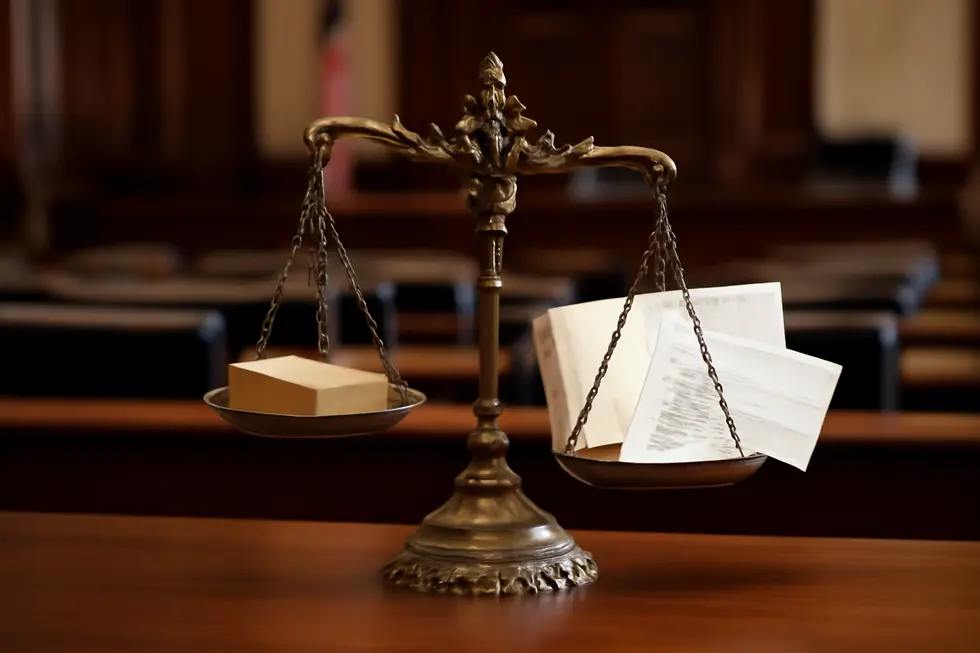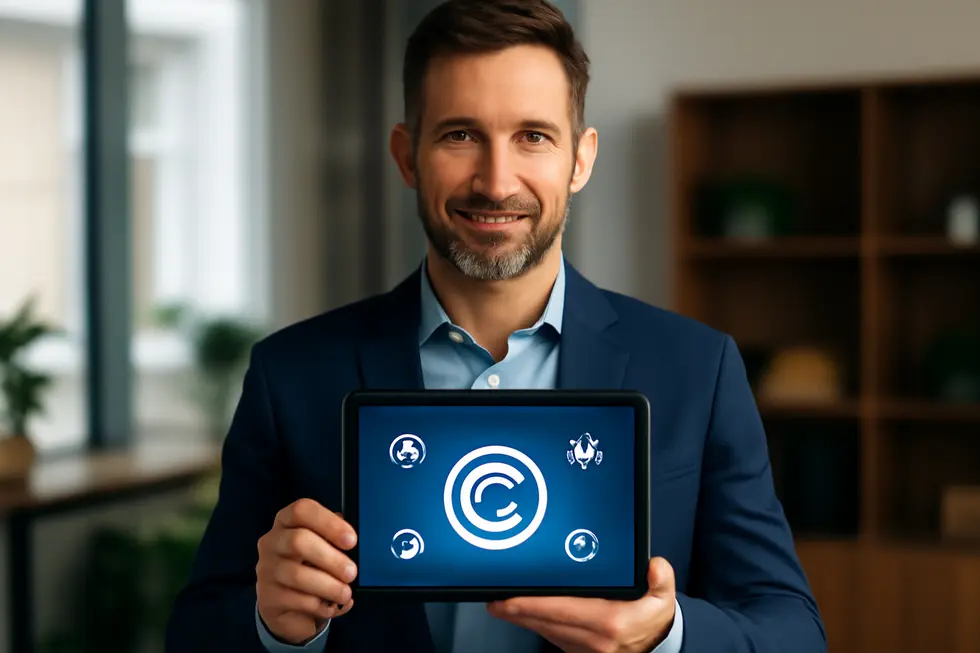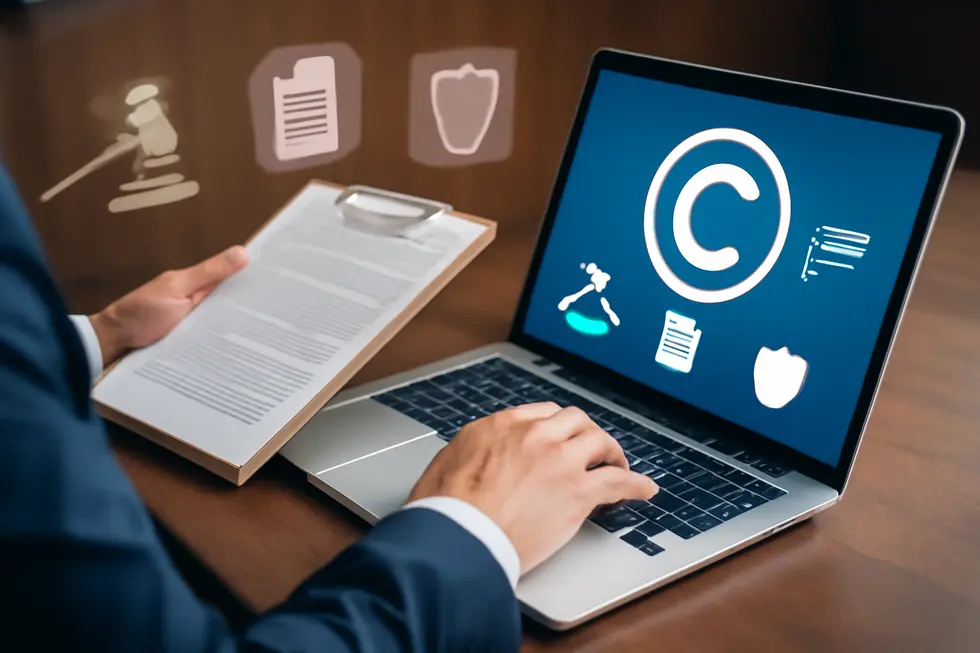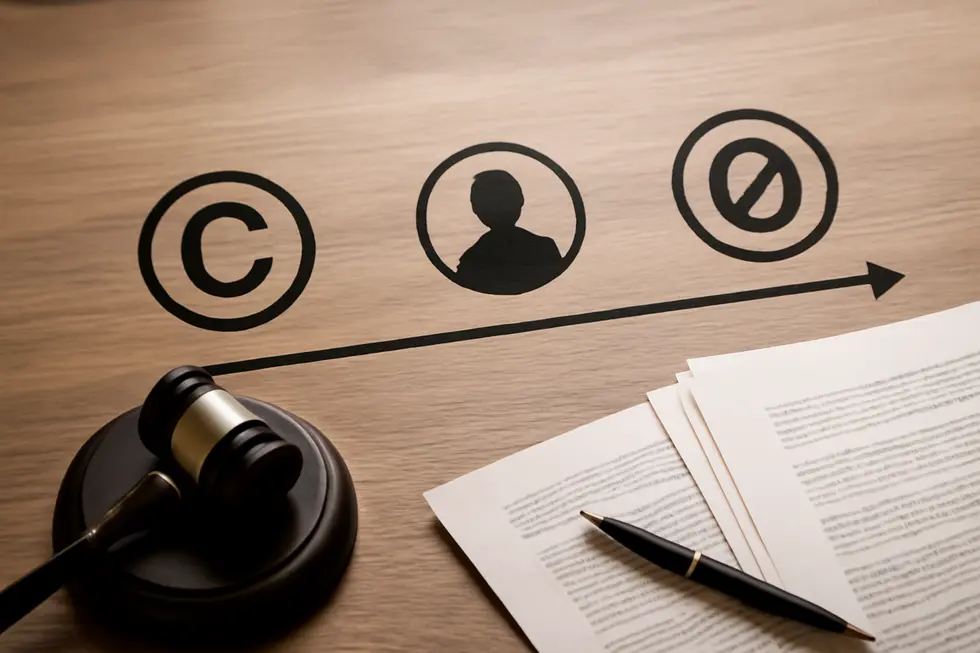Introduction
Copyright protection is a foundational element that empowers business owners to control and monetize their creative works. Unlike trademarks or patents, copyright protection does not require lengthy registration procedures to take effect — it begins automatically the moment an original work is created and fixed in a tangible form. This subtle yet powerful legal principle means your writings, designs, software, and multimedia are protected instantly upon embodiment. Understanding this principle is crucial for businesses to safeguard their intellectual property effectively. The following chapters delve into how copyright protection begins, its legal ramifications, the benefits of immediate exclusive rights, the strategic value of registration, and the duration and enforcement considerations relevant to every business owner.
Tables of Contents
Chapter 1: Understanding How Copyright Protection Begins as Soon as the Work is Created
- Automatic Copyright Ownership: How Fixation Instantly Secures Creators’ Rights
- Why Originality and Tangible Fixation Are the Cornerstones of Instant Copyright Protection
- Navigating Automatic Copyright Protection: How Registration Empowers Enforcement and Legal Recourse
- Immediate Exclusive Rights and Legal Boundaries from the Moment a Work is Fixed
Chapter 2: Legal Implications When Copyright Protection Begins as Soon as the Work is Created
- Navigating Digital Complexities: Legal Challenges of Automatic Copyright Protection in the Age of AI and Online Content
- Economic Influence of Immediate Copyright Protection: Balancing Market Control and Enforcement
- Navigating Geopolitical and Jurisdictional Complexities in Automatic Copyright Protection
- Navigating the Complexities of AI Creations and Orphan Works Under Automatic Copyright Protection
Chapter 3: Benefits of Immediate Exclusive Rights Under Copyright Protection Beginning as Soon as the Work is Created
- How Technology Amplifies and Challenges Immediate Copyright Protections in the Digital Era
- Unlocking Economic Value: How Immediate Exclusive Rights Empower Creators and Markets
- Navigating Geopolitical Landscapes: How Global Variations Shape the Power of Immediate Exclusive Copyright Rights
- How Automatic Copyright Protection Stimulates Creativity, Innovation, and Economic Growth
Chapter 4: The Role of Registration Despite Copyright Protection Beginning as Soon as the Work is Created
- How Copyright Registration Strengthens Legal Enforcement and Unlocks Key Statutory Advantages
- How Copyright Registration Strengthens Protection Through Public Notice and Legal Power
- How Registration Strengthens Copyright Validity and Enforcement in Legal Disputes
- Enhancing Legal Power: How Registration Strengthens Copyright Enforcement and Remedies
Chapter 5: Duration and Enforcement When Copyright Protection Begins as Soon as the Work is Created
- Navigating Digital Fixation and Emerging Technologies: How Technology Shapes Copyright Duration and Enforcement
- Weighing Economic Incentives and Market Access in Copyright’s Automatic Protection
- Navigating Global Variations in Copyright Duration and Enforcement: The Geopolitical Landscape of Automatic Protection
- Navigating Enforcement Complexities: The Critical Role of Registration and Litigation in Copyright Protection
Chapter 1: Understanding How Copyright Protection Begins as Soon as the Work is Created

1. Automatic Copyright Ownership: How Fixation Instantly Secures Creators’ Rights
Copyright protection automatically arises the moment an original work is fixed in a tangible form. This concept, known as automatic vesting upon fixation, means that creators obtain exclusive rights without needing registration or formalities. Fixation occurs when a work — whether written, recorded, or digitally saved — is embodied in a stable medium that allows it to be perceived or reproduced over time. To qualify for automatic protection, the work must be both original, requiring a minimal level of creativity and independent creation, and fixed, existing beyond a fleeting idea or concept. Ownership typically vests with the creator unless the work is classified as a “work made for hire,” where rights transfer to the employer or commissioning party. This immediate protection gives creators control over their work from the outset, enabling legal remedies against unauthorized use. While registering a copyright offers added legal benefits, the underlying right to the work commences automatically upon fixation, solidifying the foundation for intellectual property rights learn more about copyright protection basics.
2. Why Originality and Tangible Fixation Are the Cornerstones of Instant Copyright Protection
Copyright protection springs to life the moment an original work is fixed in a tangible medium. This immediate safeguard hinges on two fundamental requirements: originality and fixation. Originality demands that the work reflects the creator’s independent effort with at least a minimal degree of creativity—mere facts, ideas, or common expressions do not qualify. As clarified by the U.S. Supreme Court in Feist Publications, Inc. v. Rural Telephone Service Co. (1991), originality requires a personal imprint, however modest, that distinguishes the work from existing materials.
Fixation means the work must be embodied in a form perceptible either physically or digitally, such as writing, audio or video recordings, or saved files. Only upon such fixation does copyright arise automatically, shielded from reproduction or unauthorized use without any formal registration.
Although registration is not necessary to establish copyright, it offers legal advantages like enabling copyright holders to seek statutory damages and attorney fees. This automatic protection fosters creativity by granting creators immediate control, making it crucial to understand that originality and fixation form the legal bedrock of copyright from the very first moment of creation.
For more insights on copyright concepts that benefit business owners, explore this copyright information example for business.
Learn more about the originality standard from the Feist Publications ruling here: https://www.youtube.com/watch?v=2WDM95auL5M
3. Navigating Automatic Copyright Protection: How Registration Empowers Enforcement and Legal Recourse
Copyright protection starts automatically the moment an original work is fixed in a tangible medium, granting creators exclusive rights without the need for registration or formal steps. This applies broadly to writings, music, art, software, and digital media. Yet, while registration is not required to establish copyright, it significantly strengthens a creator’s ability to enforce those rights. In jurisdictions like the U.S., registering a work provides vital legal evidence of ownership and is necessary before filing an infringement lawsuit. If registration occurs within three months of publication—or prior to infringement—copyright holders can pursue statutory damages and attorney’s fees, tools unavailable otherwise. Moreover, copyright protection duration generally lasts the life of the author plus 70 years, with nuances depending on the work’s nature and jurisdiction. This balance ensures immediate, automatic protection encourages creativity, while optional registration equips creators with a stronger position in legal disputes. For creators seeking a deeper understanding of these protections, exploring the nuances of copyright law and public domain offers valuable insight. Further references on the automatic nature of copyright protection and enforcement can be found here.
4. Immediate Exclusive Rights and Legal Boundaries from the Moment a Work is Fixed
Automatic Copyright and the Power It Grants
From the instant an original work is fixed in a tangible form, copyright protection automatically grants the creator a bundle of exclusive rights. These rights include reproducing the work, distributing copies, publicly performing or displaying it, and creating derivative works. Such control empowers creators to govern how their work is used, licensed, or shared, providing immediate legal authority without the need for registration.
However, these exclusive rights are balanced by important legal limitations that foster public interest and fair use. Concepts like fair use allow limited, unauthorized use for commentary, education, or news reporting, ensuring creativity and critique can flourish even alongside ownership rights. Additionally, the protection spans the creator’s life plus 70 years, after which the work enters the public domain and becomes freely accessible.
An important nuance lies in “works made for hire,” where copyright belongs not to the creator personally but to the employer or commissioning party, redefining ownership at creation. This immediate protection with defined boundaries illustrates how copyright law incentivizes creativity while maintaining societal balance.
For more on the economic impact of these protections, see the copyright definition and economics for business guide. External details on this topic are also discussed in the Connecticut State Library’s Copyright Basics guide.
Chapter 2: Legal Implications When Copyright Protection Begins as Soon as the Work is Created

1. Navigating Digital Complexities: Legal Challenges of Automatic Copyright Protection in the Age of AI and Online Content
Copyright protection arises instantly once an original work is fixed in tangible form, yet the digital era has complicated this principle. Advances in artificial intelligence have disrupted traditional notions of authorship, as AI-generated content lacks clear legal authorship, raising challenging questions about ownership rights. Additionally, AI models trained on extensive copyrighted data risk unintentional infringement, complicating enforcement under frameworks like the DMCA. Without mandatory registration, proving authorship and controlling unauthorized use become more difficult, prompting technological solutions such as blockchain registries and digital watermarks to provide more reliable proof of creation. Furthermore, fair use doctrines face nuanced interpretation challenges, particularly when new works closely resemble existing ones or derive from AI synthesis. Lawmakers and courts continue striving to update legal frameworks that balance innovation with creators’ rights protection, especially amid ongoing technological evolution. Embracing these complexities is essential to sustaining the immediate copyright protection principle in a digital world that demands both legal clarity and technological safeguards. For more nuanced details on copyright information for books. External insight: see University of Michigan’s overview on copyright basics here.
2. Economic Influence of Immediate Copyright Protection: Balancing Market Control and Enforcement
Copyright protection that begins the moment a work is fixed grants creators an immediate legal monopoly, fostering economic incentives to innovate and produce original content. This automatic right allows creators to control reproduction, distribution, and adaptations, securing exclusivity that supports revenue generation through licensing and sales. However, while protection is instant, enforcement often hinges on registration, which unlocks legal avenues to claim statutory damages and attorney fees in infringement cases. This dual system encourages creators to register strategically, enhancing their market leverage and strengthening their ability to deter unauthorized use. Technological advances complicate this balance by challenging traditional concepts of authorship and fair use, requiring ongoing legal evolution to maintain incentives without stifling competition. Ultimately, the immediate legal control embedded in copyright shapes market dynamics by determining availability, pricing, and competitive conditions for creative works. For a deeper exploration of these intertwined economic and legal aspects, see this detailed resource on economic and legal aspects of copyright protection.
3. Navigating Geopolitical and Jurisdictional Complexities in Automatic Copyright Protection
Copyright protection begins automatically once an original work is fixed, a principle anchored by international treaties like the Berne Convention. This ensures that creators worldwide receive immediate baseline protection without formalities, facilitating a level of harmonization across borders. However, despite this global framework, substantial jurisdictional differences persist—especially regarding registration requirements, enforcement mechanisms, and duration of protection. For instance, the U.S. emphasizes voluntary registration to unlock stronger legal remedies, while other nations mandate or incentivize registration differently. Such disparities complicate the enforcement of rights when infringements cross national lines or involve digital media distributed globally. Moreover, emerging technologies, particularly AI-generated content, introduce new challenges about ownership and rights management, requiring coordinated international regulatory responses. These geopolitical and jurisdictional variations underscore the complexity behind the seemingly simple rule that protection starts at creation, impacting how creators safeguard and assert their rights worldwide. Understanding these nuances is crucial for navigating cross-border copyright issues effectively. For more insights on copyright fundamentals and enforcement, visit copyright definition for computer works. See also an external resource on international copyright law principles here.
4. Navigating the Complexities of AI Creations and Orphan Works Under Automatic Copyright Protection
Copyright protection begins automatically the moment a work is fixed in a tangible form, ushering in intricate legal and ethical challenges, especially as artificial intelligence (AI) increasingly generates creative content. Because copyright law traditionally requires a human author, AI-generated works raise questions about who owns the rights, if anyone, when a machine is the sole creator. Additionally, AI’s reliance on copyrighted material for training intensifies debates on infringement and fair use, complicating authorship and ownership further. Meanwhile, the long duration of copyright often results in orphan works—protected creations whose owners are untraceable—restricting access to cultural heritage and legal reuse. This tension between protecting rights and ensuring public accessibility highlights the need to balance incentives for creators and innovation with fair use and transparency. Establishing ethical guidelines for AI’s role and updating legal frameworks to address orphan works are crucial for fostering an environment that respects creator rights while promoting knowledge dissemination. For deeper insights into copyright terms and public access, see this guide on copyright law and the public domain. More detailed legal perspectives can be found at the U.S. Copyright Office.
Chapter 3: Benefits of Immediate Exclusive Rights Under Copyright Protection Beginning as Soon as the Work is Created

1. How Technology Amplifies and Challenges Immediate Copyright Protections in the Digital Era
Copyright protection attaches instantly when an original work becomes fixed in a tangible form, a principle that gains critical importance in today’s digital landscape. With technological advances enabling near-instant reproduction and global distribution of digital content, creators benefit from immediate exclusive rights that empower them to control copying, sharing, and adapting of their works. This control not only safeguards the integrity and quality of creations—especially software and digital media—but also fosters innovation and economic reward through licensing and sales. However, technology also intensifies challenges such as mass unauthorized copying and online piracy, which require the law’s enforcement mechanisms to evolve. Emerging technologies, including generative artificial intelligence, further blur traditional boundaries of authorship and infringement, prompting legal adjustments to address AI-generated content. In software development, the interplay between automatic copyright protection for code and optional patent protection for functional aspects offers strategic choices to creators. Thus, technology both enhances and complicates the advantages of immediate copyright, ensuring creators maintain vital rights from the moment of creation. For more insights on copyright and technology, explore the coverage on copyright and computer-related works. External reference: see detailed discussion on copyright challenges in the digital age [1].
2. Unlocking Economic Value: How Immediate Exclusive Rights Empower Creators and Markets
Copyright protection grants creators an immediate, legally enforceable monopoly on their original works from the moment these are fixed in tangible form. This automatic exclusivity allows authors, artists, and developers to control reproduction, distribution, and adaptation, facilitating swift monetization and financial returns. By removing barriers to commercial exploitation, creators can license or transfer rights instantly, opening markets that fuel economic growth. This immediacy incentivizes ongoing creative investment, as rights holders can negotiate with legal certainty against unauthorized use. Compared to patents, which require formal registration and delay exclusivity, copyright’s instant protection is particularly vital in dynamic industries like digital media and publishing. Such protections not only reward originality but also encourage innovation and cultural development, balancing private rights with public benefit over time. The ability to capitalize on a work right after its creation ensures creators remain motivated and boosts the creative economy. For a deeper economic perspective on copyright, see this analysis.
3. Navigating Geopolitical Landscapes: How Global Variations Shape the Power of Immediate Exclusive Copyright Rights
Copyright protection springs into effect the moment a work is both original and fixed in a tangible form, yet the extent and impact of these immediate exclusive rights vary dramatically depending on geopolitical contexts. Diverse national laws create a patchwork of protections where a work may enjoy robust automatic rights in one country while facing nuanced requirements or weaker enforcement in another. International treaties like the Berne Convention establish baseline protections for creators, bridging some of these gaps, but exceptions and enforcement practices remain uneven. Cross-border enforcement challenges arise from differing judicial systems and resource limitations, complicating global rights management. Economic and political relationships further influence how exclusive rights are licensed or defended internationally. Societal values also play a role, as cultural attitudes toward intellectual property affect the acceptance and execution of these rights. Creators and multinational entities must navigate this evolving geopolitical landscape carefully to maximize the practical benefits that immediate copyright protection offers worldwide. For more insight on copyright fundamentals supporting creators’ control, see copyright definition and economics.
External Reference: Analysis of the Berne Convention’s influence on copyright protections.
4. How Automatic Copyright Protection Stimulates Creativity, Innovation, and Economic Growth
Immediate exclusive rights granted by copyright the moment a work is fixed empower creators across industries by securing control over their creations without delay. This automatic protection fosters a dynamic creative environment where artists, authors, and businesses can confidently invest time and resources, knowing their original works are legally safeguarded. By ensuring creators benefit from the use and distribution of their works, the law promotes ongoing innovation and cultural advancement. Furthermore, these rights help maintain artistic integrity and fair compensation, which in turn supports broader economic growth in creative sectors. While protecting creators’ interests, copyright also encourages collaboration and fair use, balancing societal access with proprietary rights. Particularly in the digital age, where content can be rapidly shared and copied, immediate copyright protection underpins a legal framework vital for combating unauthorized exploitation and piracy. As a result, it shapes an ecosystem that rewards original work and nurtures a culture of respect for intellectual property, fueling cultural diversity and economic vitality. For further insights on leveraging copyright in business contexts, see copyright language business owners.
Chapter 4: The Role of Registration Despite Copyright Protection Beginning as Soon as the Work is Created

1. How Copyright Registration Strengthens Legal Enforcement and Unlocks Key Statutory Advantages
Although copyright protection attaches immediately upon creation and fixation of an original work, registration substantially amplifies a creator’s ability to enforce rights effectively. In the United States, filing a registration with the Copyright Office is required before initiating infringement litigation, making it an essential procedural step. Beyond merely enabling lawsuits, registration grants access to statutory remedies such as statutory damages and attorney’s fees, which are difficult or impossible to obtain otherwise. These remedies enhance the financial viability of enforcement, especially when actual damages are hard to quantify. Registration also establishes an official public record of ownership, strengthening the evidentiary foundation in disputes and licensing deals. This visible claim can deter potential infringers by signaling legal preparedness. For digital works like software, while automatic protection exists upon code fixation, registration remains crucial to combat piracy and enforce licensing rights. Ultimately, creators who seek to protect and monetize their works gain a strategic advantage by leveraging registration alongside inherent copyright benefits. For more detailed guidance, see this resource on copyright information for books. Additional details on statutory benefits and legal enforcement can be found here.
2. How Copyright Registration Strengthens Protection Through Public Notice and Legal Power
Copyright protection arises immediately upon an original work’s fixation, but registering that copyright significantly amplifies its protective power. Registration publicly records the creator’s ownership, providing clear notice to others that the work is legally protected. This public disclosure helps prevent accidental infringement by enabling prospective users to identify the rightful owner and understand that unauthorized use may trigger legal consequences.
In the United States, registration is a necessary step before initiating infringement lawsuits. Without it, the copyright owner cannot claim statutory damages or recover attorney’s fees, both crucial deterrents against infringement. Registered works also grant creators stronger leverage when enforcing their rights, whether through formal infringement notices or litigation. This increased enforcement capability signals to potential infringers the seriousness of the creator’s claim, often discouraging unauthorized exploitation before it even occurs.
Thus, while automatic copyright offers foundational protection, registration acts as a powerful legal and practical tool that enhances a creator’s control over their work and deters infringement. For more insights, explore copyright information for books. Additional guidance is available from the U.S. Copyright Office.
3. How Registration Strengthens Copyright Validity and Enforcement in Legal Disputes
Although copyright protection arises automatically when an original work is fixed in a tangible medium, registering that work grants significant legal benefits crucial during disputes. Registration acts as prima facie evidence of ownership and validity, offering courts a presumption of legitimacy that eases the burden of proof for creators. Without registration, creators cannot pursue statutory damages or attorney’s fees in federal infringement lawsuits, limiting their remedies and sometimes the feasibility of enforcement altogether. Moreover, registration is a mandatory step before filing infringement claims in federal court, underscoring its role as an enforcement gateway. While registration can occur anytime during the copyright term, early registration maximizes evidentiary advantages, such as establishing a presumption of validity within five years of publication. This legal foundation reinforces the creator’s claim and supports dispute resolution by clarifying ownership, thereby deterring infringements or simplifying objections. Thus, registration complements automatic protection by transforming a creator’s right into a stronger, actionable legal tool, as explained in detailed guidance on protecting original ideas from authoritative sources. For expanded insights on these legal benefits and dispute processes, consult this copyright information for books alongside external resources.
4. Enhancing Legal Power: How Registration Strengthens Copyright Enforcement and Remedies
Copyright protection begins automatically the moment an original work is fixed in a tangible form, granting creators exclusive rights without requiring registration. However, registration plays a vital legal role by significantly strengthening enforcement. Without registration, copyright holders must prove ownership and damages, facing procedural challenges when pursuing infringers. Registered works, in contrast, gain access to federal courts with greater ease, allowing owners to seek statutory damages and recover attorney’s fees—remedies often unavailable to unregistered works. Moreover, registration creates an official public record, serving as strong evidence of ownership that deters infringement by increasing the risks and penalties for violators. This process involves a formal application and filing fee but delivers substantial benefits. While automatic protection ensures immediate control over a work, registration is a strategic step for creators who want robust legal recourse against infringement, making it an indispensable complement to automatic copyright. Learn more about foundational copyright principles in copyright definition for business owners.
Chapter 5: Duration and Enforcement When Copyright Protection Begins as Soon as the Work is Created

1. Navigating Digital Fixation and Emerging Technologies: How Technology Shapes Copyright Duration and Enforcement
Copyright protection automatically begins the moment a work is fixed in a tangible form, including digital media. The transition from physical to digital fixation introduces novel complexities in enforcement and duration. Digital files can be copied, distributed, and altered rapidly, complicating the control creators have over their works despite the fixed copyright term—generally the author’s life plus 70 years. This speed and ease of reproduction pressures rights holders to act swiftly, often requiring timely registration to access statutory remedies for infringement. Additionally, new creation methods such as AI-generated content challenge traditional notions of authorship, raising unresolved questions about ownership and how duration applies when no human author exists. Legal frameworks like the Digital Millennium Copyright Act address some of these digital challenges by outlining enforcement mechanisms tailored to online environments and technology-driven piracy. Still, balancing the immediate protections granted upon fixation with effective enforcement remains a complex task as technology continuously evolves. For further details on digital copyright applications, see this overview of copyright definition in computer contexts. More on enforcement timing can be found here: https://lumenci.com/blogs/what-is-a-copyright-infringement-claim/
2. Weighing Economic Incentives and Market Access in Copyright’s Automatic Protection
Copyright protection starts automatically the moment a work is fixed in tangible form, providing creators with immediate exclusive rights. This automatic initiation removes procedural barriers, encouraging innovation by ensuring creators can control reproduction, distribution, and adaptation from the outset. However, this exclusivity is balanced through a limited duration—typically the author’s life plus 70 years—granting creators a reasonable term to recoup investments and profit while ultimately allowing works to enrich the public domain. Economic incentives stemming from this temporary monopoly motivate not only artists but also investors and producers who fund creative endeavors. Enforcement mechanisms play a vital role in protecting these rights, but must be calibrated to avoid overreach that might restrict competition or cultural dissemination. The eventual transition of works into the public domain fosters a broader cultural commons, sustaining creativity beyond individual ownership. This dynamic balance between creator incentives and public access underscores the economic rationale that shapes both the duration and enforcement of copyright protection. For a detailed view on how copyright promotes public access, see copyright law and public domain.
3. Navigating Global Variations in Copyright Duration and Enforcement: The Geopolitical Landscape of Automatic Protection
Copyright protection begins immediately upon the creation and fixation of a work, yet the duration and enforcement of these rights differ markedly across the globe. While international treaties like the Berne Convention set minimum standards such as a life-plus-50-years term, national laws often extend this to life-plus-70-years or modify it further, reflecting local policy priorities. Enforcement mechanisms also vary widely: some countries require formal registration to commence litigation, whereas others grant full protection without formalities, leveraging civil, administrative, and border controls to combat infringement. The effectiveness of enforcement is deeply influenced by geopolitical factors including legal infrastructure, resource allocation, and political commitment. Despite international frameworks like TRIPS and WIPO treaties aiming to harmonize protection, enforcement remains largely territorial, decided by national law where the infringement occurs. This complex patchwork means creators enjoy automatic rights from creation, but the scope and vigor of protection depend on where and how those rights are asserted. For more insights into legal enforcement nuances, see the comprehensive copyright information for books.
For authoritative guidance on international copyright terms and enforcement variations, the University of Pennsylvania Libraries Guide provides an essential resource: https://www.library.upenn.edu/copyright/international.
4. Navigating Enforcement Complexities: The Critical Role of Registration and Litigation in Copyright Protection
Copyright protection starts automatically once a work is fixed, but this immediacy introduces enforcement challenges. Proving ownership and the creation date can become complicated without formal documentation, especially over the long copyright duration that often exceeds a lifetime plus 70 years. While registration is not mandatory, it plays a crucial role in overcoming these hurdles. Registered works enjoy legal presumptions of ownership, making lawsuits for infringement more viable and streamlined. Enforcement usually begins with informal actions such as cease-and-desist notices or digital takedown requests; however, persistent infringement often requires costly and time-intensive litigation to secure damages and injunctions. Courts tend to demand solid proof of authorship, something registration strongly supports. Moreover, strong enforcement safeguards creators’ investments but may restrict public access and raise barriers for emerging artists given the financial and procedural burdens involved. Challenges multiply in the digital age, where unauthorized sharing is rampant and tracking infringement is difficult. For creators aiming to protect their rights effectively amid these complexities, understanding the balance between automatic protection and the empowering legal benefits of registration is essential. For deeper insights, refer to the U.S. Copyright Office’s guidelines on copyright enforcement.
Final thoughts
Copyright protection’s automatic nature provides business owners with immediate control over their original works the moment they are fixed in a tangible form. This guarantees that creative assets—from software and marketing materials to multimedia and literary works—are safeguarded without delay or initial administrative burdens. Understanding the legal implications, benefits of exclusive rights, and the enhanced role registration plays helps businesses strategically manage their intellectual property portfolio. Moreover, being aware of protection duration and enforcement options empowers companies to defend their assets effectively over the long term. By internalizing these core concepts, business owners can confidently navigate the intellectual property landscape and maximize the value and security of their creative innovations.
Your IP is the foundation of your success – let’s protect it together before it’s too late. We can’t wait to help you turn your ideas into legally secured assets.
About us
undefined



Your article helped me a lot, is there any more related content? Thanks! https://accounts.binance.com/uk-UA/register?ref=XZNNWTW7